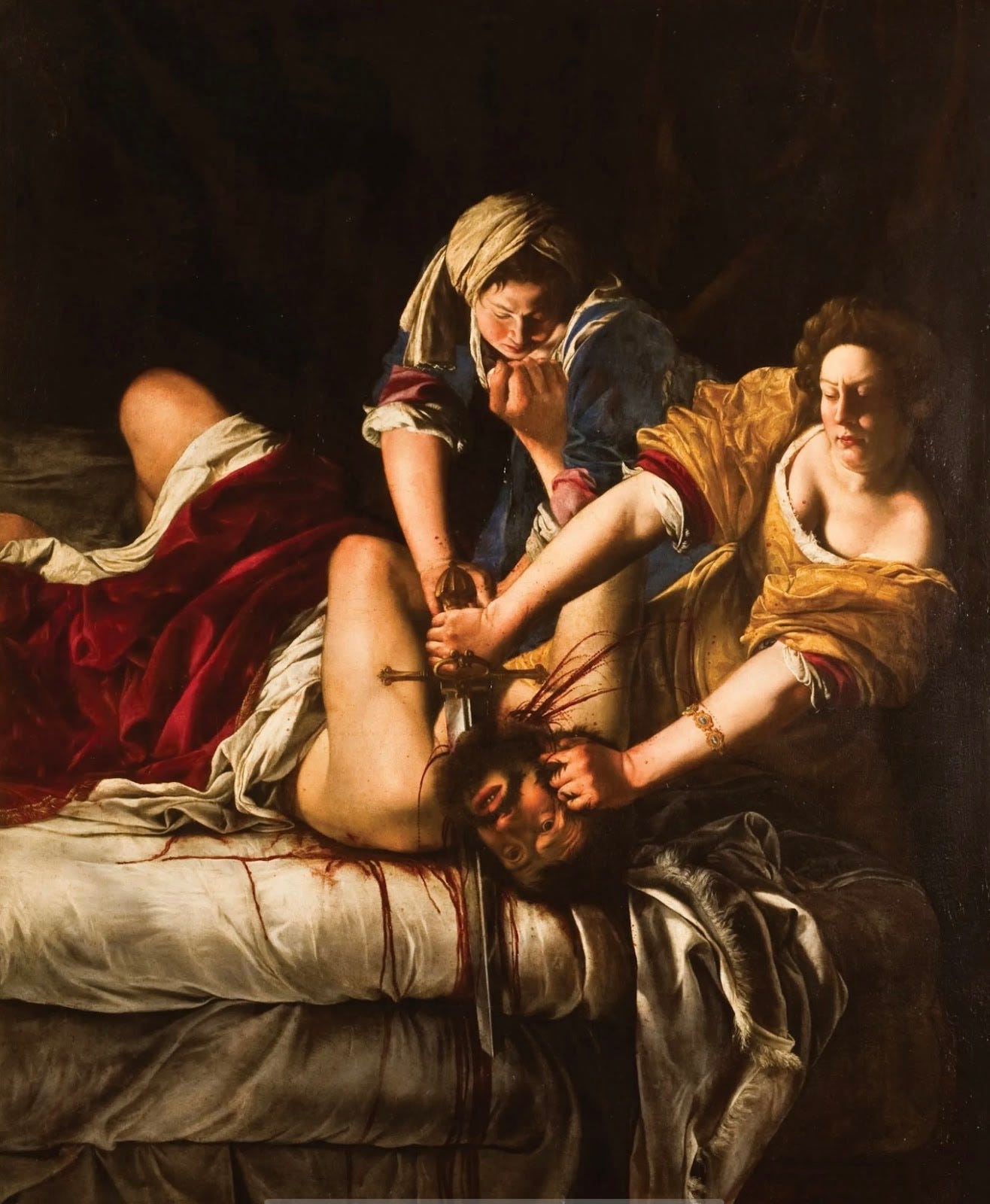Welcome to Study Hall With Sarah Hoover: art history musings that you’ll never read on a dusty old man’s bookshelf. This is a newsletter for the people who always wanted to take an art history class, or took one years ago and are anxious to dive back in. It’s for those of you who recognize that a lot of that art was born from trauma, and that feminist art in particular has a deep history, chock full of stories needing to be told. Today, for our first newsletter, we are going to throw it back to the Italian Renaissance, and talk about one of my modern heroes, Linda Nochlin. Enjoy!
Women artists had been ignored at best, and on bad days, willfully written out of the canon. There had been a lot of bad days.
Linda Nochlin’s photo occupies a place of honor in the shrine in my bedroom belonging to my feminist ancestors—the one I demand my husband pray to at night before I let him see my boobs. She’s up there for many reasons, one being that in 1971 she wrote a seminal feminist text, Why Have There Been No Great Women Artists?, which has informed studies of structural bias ever since—and which certainly has inspired my outlook on the art I write about.
Nochlin was also a curator, and in 1976, she co-curated an exhibition with art historian Ann Sutherland Harris at LACMA; a show which covered art history from 1550-1950– and only women were chosen to illustrate the art movements of those eras. This was significant because most art exhibits in the 70s, especially at major museums, did not include women artists at all. Women artists had been ignored at best, and on bad days, willfully written out of the canon. There had been a lot of bad days.
One of the artists in Nochlin and Harris’s show was Artemisia Gentileschi (b. 1593, Rome). Art historians had for hundreds of years overlooked her, but following this exhibition, she became enshrined as one of the great painters of the Italian Baroque period—lauded, collected, and the subject of major museum exhibitions. Nochlin and Harris really turned it around for Artemisia, and as we now know, thanks to their championing of her work and life, her story is both relevant and revelatory for our purposes here at Study Hall.
Artemisia was the daughter of Orazio, another well regarded painter of the Baroque. She studied in his studio, and while she was in her teens, he hired a local painter, Agostino Tassi, to teach her how to paint perspective (a technological innovation of the early 1400s). In 1611, when she was eighteen, and already an accomplished artist (her paintings comparable in quality to the great male painters of her time), Tassi raped her. She and her father would end up suing him—not for the rape, which was judged by different standards in this era—but for his refusal to marry her, which would have absolved her family of shame. Eventually, she wound up betrothed to another minor painter, and while their union lasted only about a decade, her status as a married woman allowed her the freedom to join a proper painting school, travel, and become an artist under her own name, separate from her father.
Art historians have long asserted that Artemisia’s paintings were reactions to the circumstances of her rape. In the 130 or so paintings attributed to her (only half of which we are certain are hers), some of the most powerful show intense violence towards men—most noticeably Judith Beheading Holofernes, a story of the Old Testament which she painted more than once (my favorite version is in the Uffizi gallery in Florence).
A maidservant holds down Holofernes while Judith chops his head off, because teamwork makes the dream work. That Gentilesche chose topics related to her trauma or as a sort of catharsis is a theory that some art historians refute. But the key here is that many of her paintings depict perspectives unique to the telling of women. Her painting of Susanna and the Elders, for example, (a story in which two men surprise a young woman bathing, and tell her that if she doesn’t have sex with them, they will lie and accuse her of licentiousness which will ruin her public honor), was described by the academic Mary Garrard as “the first time in which sexual predation is depicted from the point of view of the predated.” Imagine, a world where “other” perspectives have value for what they can teach everyone about the human experience…
I have two take-aways: 1. Outside perspectives are necessary in proliferating a deeper and more thorough understanding of humanity, and 2. Even when not explicitly explained as such, trauma often informs our art making. All anyone can do is tell their own story, right?
As an art historian myself, I’ve been looking at feminist art for more than twenty years. As I’ve revisited some of the artworks that have stuck with me, I’ve started to wonder if the people who made them were not only commenting on our systems, but on how our systems specifically impacted them. Maybe some of my favorite artworks have all along been the artists’ own ways of processing personal trauma. And that’s the kind of thing we’re going to talk about in Study Hall, so see you next week <3.






had to stop reading at 'seminal'
please consider 'ovular' instead...I don't want to think of ejaculate when reading your writing.
Gratitude for your consideration.
Reading this belatedly after Jenovia’s Web mentioned you on Notes just now.
This reminds me of visiting the Uffizi and realising how hardly any art there was by women. First time I saw Gentileschi’s work! Thanks for the insights.